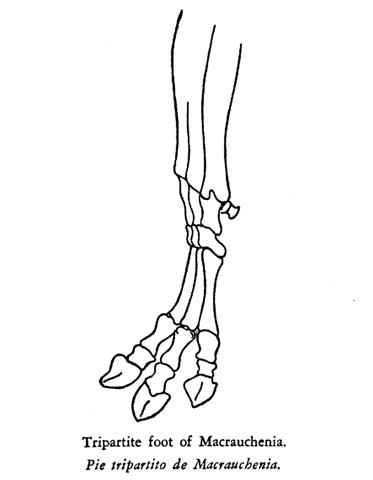|
||||||||

GD35
|
rima | Although rima means hand or arm it also means five (due to the number of fingers on a hand). | ||||||
A few preliminary remarks and imaginations: 1. GD35 shows an arm - upper arm, forearm and hand. The hand has three fingers + thumb. The thumb has a very important function. Without thumb not much would be accomplished. Therefore the thumb is similar to a chief, ariki. Posnansky has an explanation for why there are only three toes in images dating from the 3rd and last phase of Tiahuanaco:
"Since in some castes of the Altiplano [they] believed themselves to be descendants of the Waris (Camelidae, vicuña and guanaco)[, though] probably of those gigantic Waris, the remains of which are found in the alluvia (Macrauchenia), it is not strange either to find the tripartite foot in the anthropomorphic figures. Tripartite feet were also had by certain species of Toxodontia which lived on the Altiplano during the Pleistocene and perhaps even later which, in our judgment, are the animals which in tradition gave rise to the 'Wari-Willka'. With the regard to the belief of the Indians that they descended from the Waris, we have the tradition noted by Ph. Guaman Poma in his Nueva Corónica y Buen Gobierno, in which it is related that the first men were the Wari-Wiracocha-runas." If toes number three, then fingers must certainly also count three (+ thumb), I believe. The idea of Posnansky may be what is needed to explain the phenomenon of three fingers in the glyphs of rongorongo - on Easter Island there were no Waris, but the all-important birds had only three toes. The ancestors were like gods and the gods manifested themselves as birds. |
||||||||
